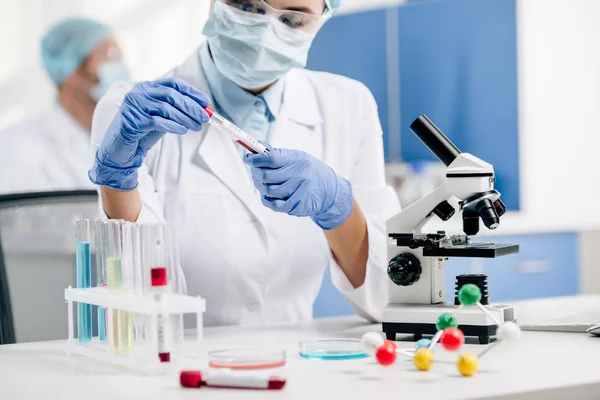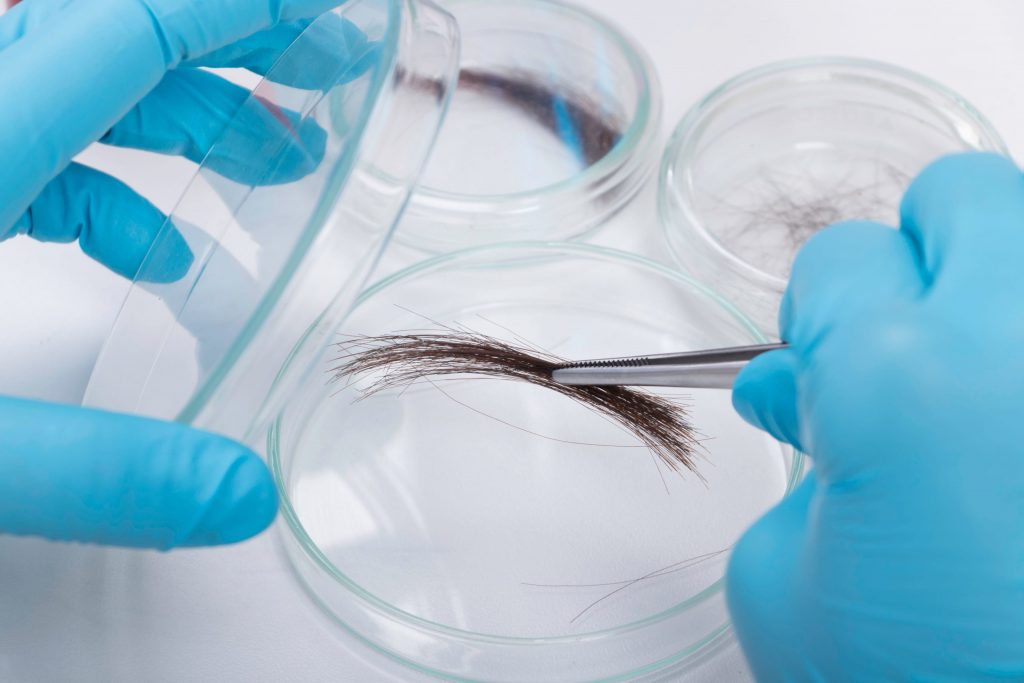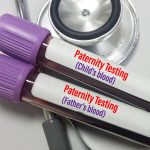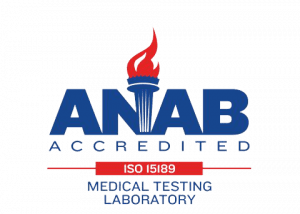Hair DNA testing is becoming increasingly popular to solve biological relationship and family heritage problems. In this post, we’ll go at the key questions regarding how hair DNA tests work and what you ought to understand about using hair for DNA research. Continue reading to learn about the fundamental science underlying these tests, the stages involved, the variables influencing accuracy, real-world applications, and the endless possibilities.
Can you do a Paternity test with hair?
An alternative to utilizing a cheek swab for paternity DNA testing is hair DNA testing. When the alleged father cannot provide a cheek swab, other specimens, such as hair follicles, may be used instead of the recommended procedure for doing a DNA test, such as a paternity test. The results of hair follicle DNA tests cannot be utilized in court because the hair specimens are gathered through a hair follicle DNA test at home. To extract enough viable DNA for this test, we must take at least six to ten hair strands that still have the follicles intact. The other party will supply hair samples for hair paternity tests.
How much hair is needed for a DNA test?
The minimum number of hairs must be submitted for a hair DNA test to receive appropriate results is frequently asked. Experts often advise providing five to ten hairs with complete roots for DNA testing and extraction. DNA test with hair the follicle that produces hair at the root has nucleated cells entirely genetically identical to humans. Having many hairs guarantees that enough DNA is present, even in cases when extraction is unsuccessful. The more hairs supplied, the higher the likelihood that functional DNA will make it through during transportation or storage and that good profiles will be obtained. Sometimes, as little as 1-3 hairs will function; however, to prevent failed tests, more samples are recommended.
Can you get DNA from hair without the root?
The part of the follicle that is connected to the root has DNA, but the hair shaft does not. Thus, the root has to be intact on removed hairs for hair DNA testing to be done. During evaluation, the greatest likelihood of obtaining entire DNA profiles is seen in pulled hairs with undamaged roots. hair analysis forensics Naturally falling out fallen hairs typically have damaged biological material that is unlikely to produce complete profiles and lacks viable follicles. To collect DNA, cutting hair devoid any root tissue should be avoided entirely. Hair shafts are needed for recognizable patterns in contemporary hair evaluation, while emerging methods may one day examine shaft DNA.
Step-by-Step: The Operation of Hair DNA Testing
Have you ever considered what happens after you send hair samples to a lab? This is a step-by-step guide:
- Sample Collection: We provide equipment and explicit instructions for removing 5–10 hairs from the head fairly. Lower amounts with linked roots increase the likelihood of extracting DNA.
- DNA extraction: In a clean research establishment, we utilize chemicals to obtain and isolate DNA from cells in hair follicles.
- Enhancement: Using a process known as PCR, we create thousands of copies of essential DNA regions.
- Analysis: Sequencing that creates high-goal patterns that we can examine is used to prepare the replicated DNA.
- Comparative analysis: Unique coding examines the gaps in profiles to determine inherited relationships.
- Reporting: After the examination is complete, we provide specific reports that elucidate the findings.
Unlock the Secrets of Your DNA with Our Testing Services

Can you get DNA from a dead person’s hair?
Indeed, hair specimens from people who have passed away can be effectively tested for DNA if the hair roots are still present. In genealogy research, hair can be a valuable source of DNA for identifying unidentified remains or determining genetic ties. For a considerable amount of time after death, repeatable genetic profiles are achievable, provided that hairs have not undergone significant deterioration before DNA extraction. Even after being stored for generations or decades, hair strands can still offer effects. DNA testing with hair samples Sometimes, even when there are no longer visible follicles on old hairs, sophisticated research using hair samples from archaeology sites can retrieve recognizable DNA.
How long does DNA stay in cut hair?
When a cut piece of hair with no root substance is removed from the human body, the DNA within it starts to break down right away. Environmental variables that accelerate cellular deterioration are bacterial exposure to sunlight, heat, and wetness. Once the barrier properties of keratin are gone, the genetic information begins to degrade more quickly. Modern analysis is far less probable to provide fully recognizable profiles over time, even if nuclear DNA within hairs may still be barely noticeable up to a week after cutting. Removed hair that isn’t collected immediately for extraction unless it has connected follicles provides a dependable supply of DNA after just a few days.
Where is DNA found in hair?
The genetic information is especially stored inside the follicle structure near the root wrapping epidermal papilla cells found in hair utilized for DNA testing. These basal cells with specific functions settle in the follicular pocket and merge into the developing hair shaft. They control development cycles and provide nearby circulatory systems with the essential nutrients new hairs require to thrive. Shedding happens when the epidermal papilla retracting severs the blood supply line. DNA obtained from these follicle cells may be shown in anagen hairs that are actively developing and still have their roots intact. There is no useable DNA in the completely repaired hair above the skin level other than what is found in the circulation.
Conclusion
It should go without saying that modern hair follicle DNA testing when properly conducted by equipped laboratories such as Choice DNA, can securely resolve familial-related questions and provide substantial evidence for crimes. But before relying only on hair DNA to make important decisions, consumers must understand how it works and where it falls short and ask pointed questions. Please do not hesitate to get in touch with our friendly customer service team right now if you have any further questions about the hair DNA testing procedure or want assistance in comprehending the results of your test. We are always happy to assist you in navigating the usually confusing world of DNA testing.



















